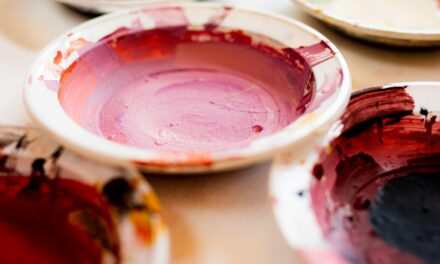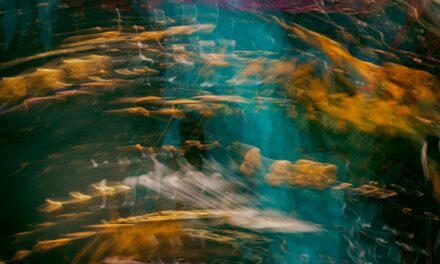In the realm of portraiture, highlights and shadows serve as the fundamental building blocks that breathe life into a two-dimensional surface. Highlights are the areas where light strikes the subject most directly, creating a luminous effect that draws the viewer’s eye. Conversely, shadows are the regions where light is obstructed, resulting in darker tones that add depth and dimension.
Understanding the interplay between these two elements is crucial for any artist aiming to create a compelling portrait. The subtle dance of light and dark not only defines the contours of the face but also conveys emotion and character, allowing the viewer to connect with the subject on a deeper level. To master highlights and shadows, one must first observe how they manifest in real life.
Natural light behaves differently depending on its source—be it sunlight, candlelight, or artificial illumination. Each light source casts unique shadows and creates distinct highlights, which can dramatically alter the mood of a portrait. For instance, soft, diffused light may produce gentle highlights and shadows, resulting in a serene and flattering representation.
In contrast, harsh light can create stark contrasts that emphasise the subject’s features, lending an air of drama or intensity. By studying these variations, artists can develop a keen eye for how to replicate them in their pastel works, ultimately enhancing the realism and emotional impact of their portraits.
Summary
- Understanding highlights and shadows is crucial for creating depth and dimension in pastel portraits.
- Utilize contrast to add dimension and bring your pastel portraits to life.
- Experiment with different pastel strokes to create texture and realism in your portraits.
- Pay attention to the importance of light source in portraiture to achieve a realistic and balanced composition.
- Avoid common mistakes such as overblending and neglecting to balance highlights and shadows for a more professional finish.
Creating Depth in Pastel Portraits
Depth is an essential quality in portraiture that allows the viewer to perceive not just the surface but also the three-dimensionality of the subject. In pastel portraits, achieving depth involves a careful layering of colours and tones to create a sense of volume and space. This can be accomplished through techniques such as blending and layering, which help to build up rich textures and gradients that mimic the natural contours of the face.
By applying multiple layers of pastel, artists can create a smooth transition between highlights and shadows, resulting in a more lifelike representation. Moreover, the use of colour can significantly contribute to the perception of depth in a portrait. Warmer tones tend to advance visually, while cooler tones recede, creating an illusion of space.
For instance, applying warmer hues to the foreground elements of a portrait can make them appear closer to the viewer, while cooler shades in the background can suggest distance. This strategic use of colour not only enhances depth but also adds emotional resonance to the artwork. By thoughtfully considering both layering techniques and colour choices, artists can create pastel portraits that possess a captivating sense of depth and dimensionality.
Utilizing Contrast for Dimension
Contrast is a powerful tool in portraiture that can dramatically enhance the sense of dimension within a work. By juxtaposing light and dark areas, artists can create visual interest and guide the viewer’s gaze throughout the composition. In pastel portraits, this contrast is particularly effective when applied to facial features such as the eyes, nose, and mouth.
For example, accentuating the highlights on the cheekbones while deepening the shadows around the jawline can create a striking effect that emphasises the subject’s facial structure. In addition to enhancing physical features, contrast can also evoke emotional responses from viewers. A portrait with high contrast may convey intensity or drama, while softer contrasts can evoke calmness or tenderness.
The key lies in finding the right balance; too much contrast can lead to an overwhelming effect, while too little may result in a flat appearance. Artists should experiment with varying degrees of contrast to discover what best serves their artistic vision and enhances the overall impact of their pastel portraits.
Techniques for Achieving Realism
Achieving realism in pastel portraits requires a combination of technical skill and keen observation. One effective technique is to employ a limited colour palette that closely mirrors the subject’s skin tones. By mixing pastels to create subtle variations in hue, artists can capture the nuances of skin texture and tone that contribute to a lifelike representation.
Additionally, incorporating underpainting techniques—where a base layer of colour is applied before adding details—can provide a solid foundation for building up realistic skin tones. Another essential technique for realism is paying attention to details such as texture and form. The use of fine strokes to depict individual hairs or delicate features can add an incredible level of detail that enhances believability.
Artists should also consider the importance of proportion; accurately capturing the relationships between different facial features is crucial for creating a convincing likeness.
Importance of Light Source in Portraiture
The light source plays a pivotal role in portraiture, influencing not only how highlights and shadows are rendered but also how the overall mood of the piece is perceived. Understanding the characteristics of different light sources—such as their direction, intensity, and colour temperature—is essential for artists seeking to create compelling portraits. For instance, front lighting tends to flatten features by illuminating them evenly, while side lighting can create dramatic shadows that enhance dimensionality.
Moreover, the choice of light source can significantly affect the emotional tone of a portrait. Warm light may evoke feelings of comfort and intimacy, while cool light can impart a sense of detachment or melancholy. Artists should consider how they want their subject to be perceived when selecting their light source; this decision will guide not only their application of highlights and shadows but also their choice of colours and overall composition.
Using Different Pastel Strokes for Texture
Creating Realism through Strokes
For instance, using short, choppy strokes can effectively represent hair or fabric, while smoother strokes may be more suitable for depicting skin or other soft surfaces.
Layering for Depth and Realism
By varying their application methods, artists can create a dynamic interplay between different textures within their portraits. Additionally, layering different strokes can enhance texture further; for example, applying a base layer with broad strokes followed by finer details can create a sense of depth and realism.
Adding Complexity through Techniques
Artists may also choose to incorporate techniques such as scumbling—where a dry pastel is applied over another layer—to create interesting visual effects that add complexity to their work. By mastering these various pastel strokes and techniques, artists can elevate their portraits beyond mere likenesses into textured representations that engage viewers on multiple sensory levels.
Balancing Highlights and Shadows for a Balanced Composition
A well-balanced composition is essential for creating harmonious pastel portraits that draw viewers in without overwhelming them. Achieving this balance involves carefully considering the distribution of highlights and shadows throughout the artwork. An effective approach is to ensure that neither element dominates excessively; instead, they should work together to create visual interest while maintaining equilibrium within the composition.
One way to achieve this balance is by employing a technique known as ‘value mapping,’ where artists assess the overall tonal range within their work before applying colour. By identifying areas of light and dark early on, artists can make informed decisions about where to place highlights and shadows for maximum impact. Additionally, incorporating transitional tones between highlights and shadows can help create smoother gradations that enhance balance within the composition.
Ultimately, by thoughtfully balancing these elements, artists can create pastel portraits that are not only visually appealing but also emotionally resonant.
Common Mistakes to Avoid in Pastel Portraits
While creating pastel portraits can be an immensely rewarding endeavour, there are several common pitfalls that artists should be mindful of to avoid detracting from their work’s quality. One frequent mistake is neglecting proper layering techniques; applying pastels too heavily without allowing for gradual build-up can result in muddy colours and loss of vibrancy. To counteract this issue, artists should focus on layering thin applications of colour gradually rather than attempting to achieve depth all at once.
Another common error lies in misjudging proportions or placements of facial features. It is crucial for artists to take time during the initial sketching phase to ensure accurate proportions before committing to colour application. Additionally, failing to consider the overall composition can lead to unbalanced or awkward arrangements within the portrait.
By remaining vigilant about these potential mistakes and taking proactive steps to address them, artists can significantly enhance their pastel portraits’ overall quality and impact. In conclusion, mastering pastel portraiture requires an understanding of various elements such as highlights and shadows, depth creation, contrast utilisation, realism techniques, light sources’ importance, texture through strokes, balanced compositions, and avoiding common mistakes. By delving into these aspects with dedication and practice, artists can develop their skills and produce captivating portraits that resonate with viewers on multiple levels.
If you are interested in exploring innovative and spontaneous forms of art, you may enjoy reading about chalk bombing and flash mob art on Think of Art. This article delves into the world of urban creation and the exciting ways in which artists are pushing boundaries and embracing new techniques. Just like the depth and dimension found in pastel portraits, these forms of art also offer a unique perspective on creativity and expression.



